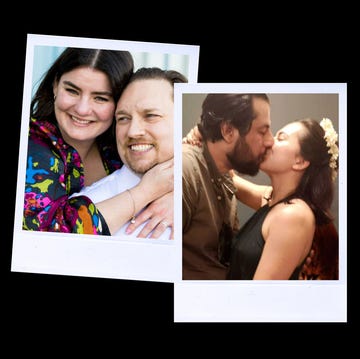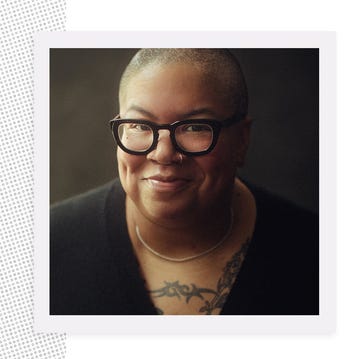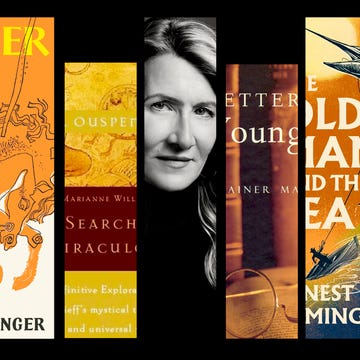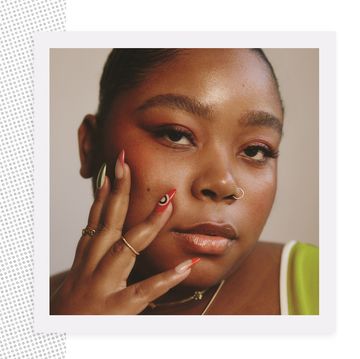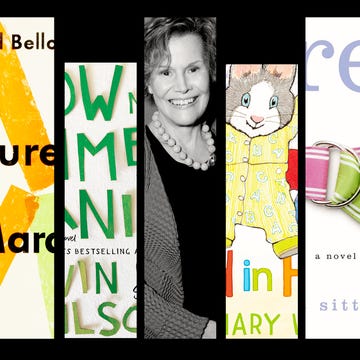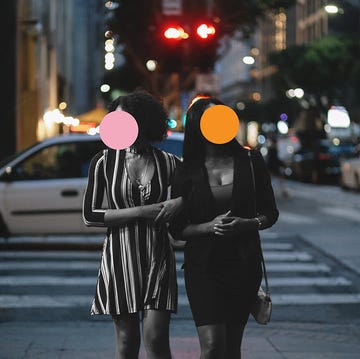There’s an influencer that the writer Sara Petersen is mildly obsessed with. I get it, so am I, as is my group chat—and likely many of this influencer’s 4.6 million Instagram followers. Her name is Hannah Neeleman, and she’s a willowy blonde former ballerina who lives on a ranch in Utah with her bolo-tie wearing husband, seven kids, and gently-raised pigs and cattle. She has a baby on her hip as she milks the family cow, churns her own butter, and makes (so much) sourdough bread. The other kids apparently help with everything. She writes in a post that the family doesn’t have a TV or a microwave, and that their home is a “nest.” Her hair is long and she is often dancing.
When I ask Petersen why she finds Hannah so compelling, she says that in part, it’s “shock and awe” at the sheer impossibility of this life, combined with a “scrap of belief that this type of easy, happy, joyful, unfettered motherhood can exist”—a belief that is only there because of a lifetime of being fed a mythology of what a model mother should be like.
Petersen has three young children. Her job is writing about motherhood and analyzing the world of mommy influencers. She knows that Hannah’s Instagram stories are not what a normal mom’s day looks like. She knows that there is vast wealth buttressing the ranch idyll (Hannah’s husband’s father founded the airline JetBlue), that her always-hot Swedish stove (which is why she doesn’t need a microwave) costs many thousands of dollars. But you can be an incredibly critical, discerning consumer of social media, and that gnawing feeling of “I could be this way” will still be there.
More From ELLE

“The power of visuals just cannot be understated,” Petersen tells me. Aesthetics are the currency that mommy influencers trade in. It’s why Hannah can sell a block of dish soap, “a rural living staple,” made from lard from her pigs, for $19. It’s why you might be snarky about $19 pig lard dish soap, and still not be able to look away.
As Petersen writes in the opening of her new book, Momfluenced: Inside the Maddening, Picture-Perfect World of Mommy Influencer Culture, she herself fulfills many of the prerequisites to being a typical “momfluencer.” Like Hannah, she is blonde, thin, and white. Before she started writing professionally, she was a stay-at-home mom. She cares about being surrounded by beautiful things, about finding the exact right shade of white paint for her Shaker-style kitchen cabinets. When we speak over Zoom, hanging above her is a very attractive paper flower garland that is leftover Easter decor. But she can’t keep up the cheeriness required for momfluencer success. “The bulk of what I have to say about motherhood in America is laced with expletives,” she writes, followed with, “I love my kids, but I often don’t love being a mother.”
Momfluenced interrogates our notions of the “right kind” of motherhood and how the airbrushed momfluencers of Instagram uphold them. Petersen, in conversation with other journalists, scholars, content creators and consumers, dissects the politics of momfluencer feeds, their place in the American cult of domesticity, and the hold they have on her as a mother. “Our cultural ideals of motherhood are so powerful and so deeply ingrained,” she tells me. “It feels very difficult to carve out one’s own maternal identity without being impacted by [them].”
Petersen traces how companies have for decades used this ideal to sell products, linking a woman’s purchasing choices to her fitness as a mother. The influencer industry has supercharged their ability to do so. While Betty Crocker was effective as a marketing device, she was a fictional character that was supposed to send the same message to every mom in America. Now, women have hundreds of real moms on their phone screens who tell them how to live their life and raise their kids in minute detail—and of course, where to buy all the necessary accouterments, from fifty-dollar silicone cheese keepers to thousand-dollar cribs.
Hearth and home are nearly always in the center of momfluencer feeds, but followers can pick an iteration of the ideal that speaks to them and their specific aspirations, whether it’s the churchgoing mom in a big house or the hip Brooklyn mom who wears nice clogs. For Petersen the drug of choice in momfluencer archetypes is the “cool mom” and the “pared-down minimalist mom,” whose aesthetics, she writes, “appeal to my desire for a certain level of peace, both internally and externally” even though, or perhaps because, the experience of motherhood is anything but that. (Her parasocial relationship with one mom in particular, effortless Maine denim purveyor Julie O’Rourke, makes frequent and delightful appearances in the book).
There is a central tension in the production of momfluencer culture. Petersen argues there is something empowering about mothers telling their own stories, controlling the narrative, because historically, the labor of motherhood has been all but invisible. “The mother within the home is told that she’s doing this really noble thing, this really beautiful thing,” she tells me. “But nothing within her lived experience really matches up to those messages, especially within capitalism [where] we are taught to equate our value with how much we make.”
But, she writes, momfluencing is also firmly rooted in the very worst capitalist tendencies, in patriarchal structures, in white supremacy. When I ask her whether momfluencing is a progressive or a regressive project, Petersen, whose taxonomy of Instagram moms includes a trans momfluencer and a QAnon momfluencer, says it is both.
It feels retrograde if they are capitalizing on a “racist, classist version of motherhood,” she says. “But if mothers are creating successful, engaged communities online, and speaking back and against that ideal, I think that’s a step forward.”
At the end of the day, Petersen reminds us that momfluencing is a performance of authenticity, a performance for an audience—and unlike mothering itself, it can be a lucrative one. There’s a trap in forgetting that as we watch a time lapse of a smiling Hannah Neeleman scrubbing her kitchen late at night. “She’s always looking so happy doing it,” Petersen tells me. “She has a million kids and she’s cleaning the kitchen at 11 p.m.”
Petersen adds, “I’m imagining myself in that situation and imagining how terribly I would be dealing, and then then I go down a whole other rabbit hole—like, why would I be dealing so badly? Am I just more high maintenance? Why do I need so much sleep?”
She points out what momfluencer content often belies by describing a filmed conversation between Hannah and Naomi Davis, also known as Taza. Both women trained at Julliard to be dancers, and both became wildly popular momfluencers.
The interaction—which you can’t watch, because Taza recently erased her online presence—includes an emotional Hannah talking about her dreams of a dance career that she did not get to live out after getting pregnant while still in school. But Hannah and Taza are quick to underline that prioritizing motherhood fulfills them completely.
But that’s the thing. “Neither of them are ‘just mothers’—they’re hugely successful financially,” Petersen says. In many ways, they’ve remained artists, performers. Motherhood is not their only identity. “They’re visible public figures in a way that most mothers are not.”
Hanna Kozlowska is a reporter based in Brooklyn who writes about tech, gender, and politics. Her work has appeared in The New York Times, Foreign Policy, Quartz, New York Magazine, NBC News, and many others.



